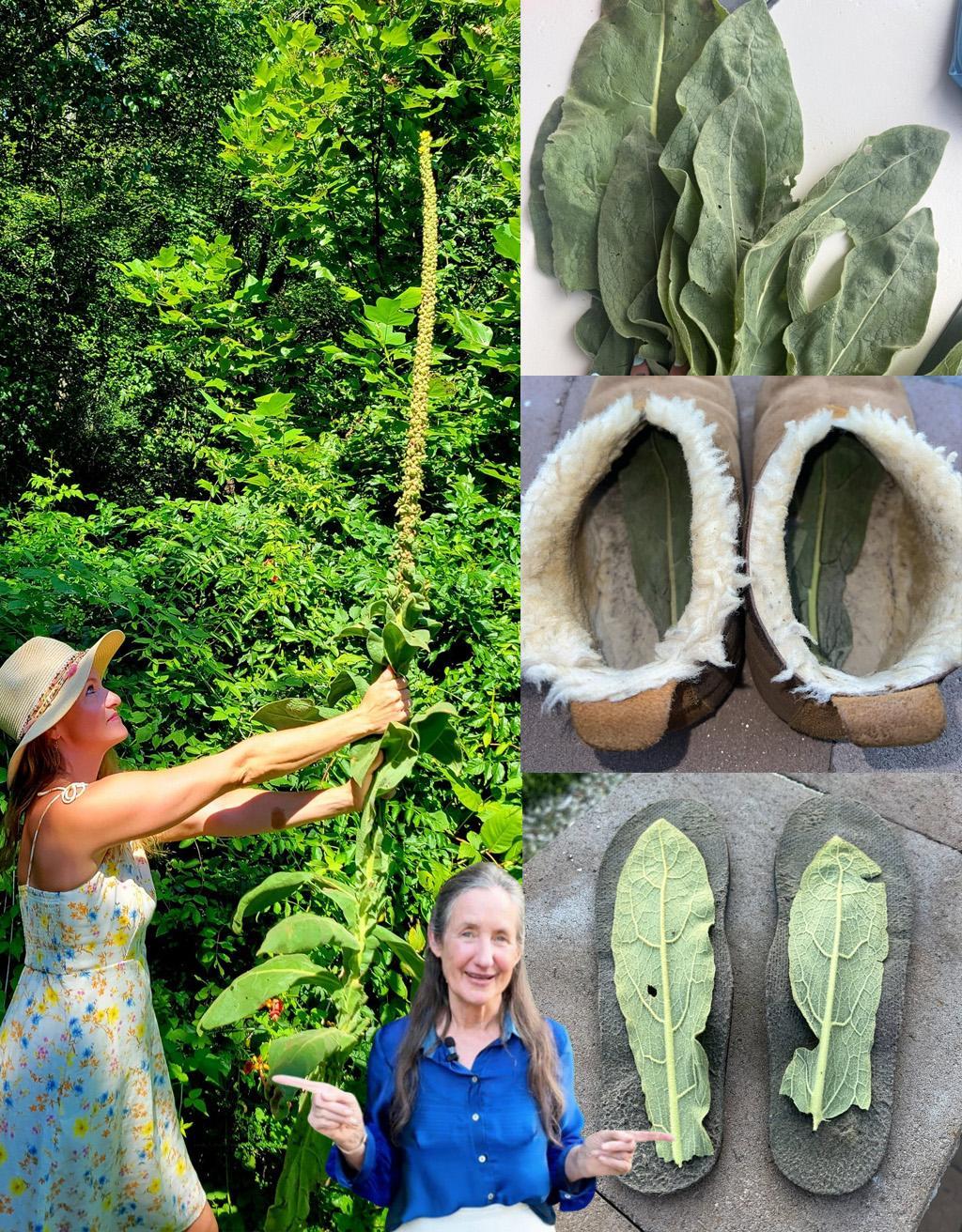2. Lubricating and Hydrating Effect
Some herbal traditions suggest that mullein leaves possess properties beneficial for structural body issues, including joints and the spine.7
Synovial Membrane Support: Herbalists like Matthew Wood have taught that mullein leaves can have a moistening, lubricating effect on the synovial membranes (which lubricate joints) and a hydrating effect on the spine and surrounding tissues.8 While the pathway from the foot’s sole to the spine is symbolic in folk medicine, this illustrates the remedy’s focus on joint and structural comfort.
3. Ease of Transdermal Application
The large, soft, fuzzy texture of the mullein leaf makes it ideal for use as a topical compress or poultice.9
Poultice Base: The velvety leaf provides a large surface area that can hold moisture and medicinal compounds close to the skin. The warmth from a sock or bandage helps the skin absorb the $\text{anti-inflammatory}$ and $\text{pain-relieving}$ components (flavonoids, saponins, iridoids).
How to Use This Traditional Remedy (As a Poultice)
The typical method involves applying the leaves warm and moist to the area:
Preparation: Harvest fresh, clean mullein leaves (avoiding the tiny hairs that can cause slight skin irritation in some people) or soak dried mullein leaves in hot water to soften them.
Application: Place the softened, warm (but not hot) leaves directly onto the soles of the feet, especially over any painful areas.
Containment: Wrap the feet loosely with a clean cloth or simply put on a pair of socks to hold the leaves in place overnight.
Disclaimer: This information is based on traditional and folk medicine practices. Mullein is not a proven treatment for chronic pain or disease, and its effectiveness for foot issues like gout or plantar fasciitis is largely anecdotal. Always consult a medical professional for persistent foot pain, inflammation, or any serious health condition.
